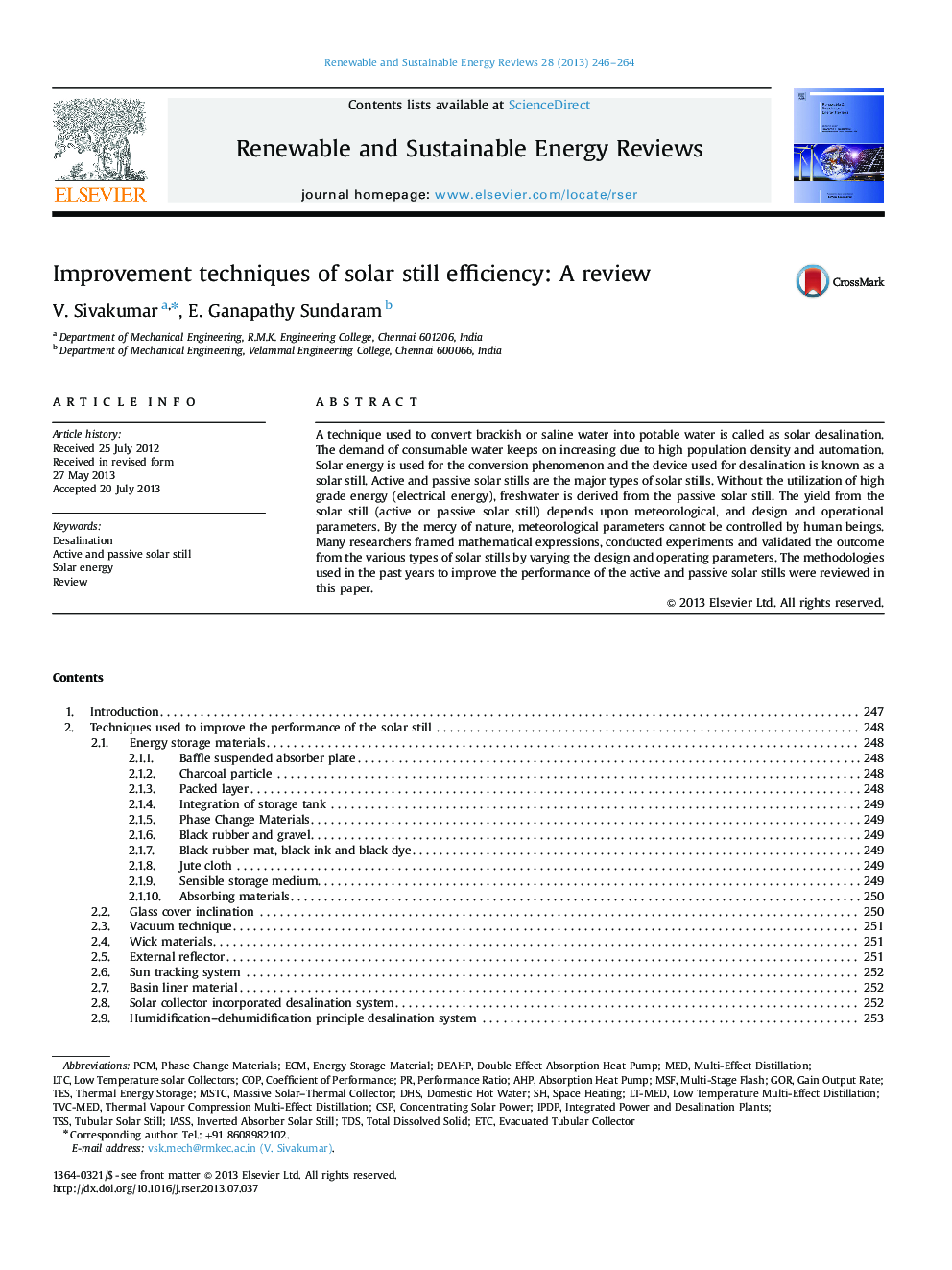| Article ID | Journal | Published Year | Pages | File Type |
|---|---|---|---|---|
| 8120979 | Renewable and Sustainable Energy Reviews | 2013 | 19 Pages |
Abstract
A technique used to convert brackish or saline water into potable water is called as solar desalination. The demand of consumable water keeps on increasing due to high population density and automation. Solar energy is used for the conversion phenomenon and the device used for desalination is known as a solar still. Active and passive solar stills are the major types of solar stills. Without the utilization of high grade energy (electrical energy), freshwater is derived from the passive solar still. The yield from the solar still (active or passive solar still) depends upon meteorological, and design and operational parameters. By the mercy of nature, meteorological parameters cannot be controlled by human beings. Many researchers framed mathematical expressions, conducted experiments and validated the outcome from the various types of solar stills by varying the design and operating parameters. The methodologies used in the past years to improve the performance of the active and passive solar stills were reviewed in this paper.
Keywords
Evacuated tubular collectorTESIASSDHSGORCSPMSFLTCTDSLT-MEDCOPTSSPCMECMDomestic hot waterSolar energyMEDMulti-Effect DistillationThermal energy storagecoefficient of performanceConcentrating solar powerAHPMulti-stage flashTubular solar stillTotal dissolved solidReviewPhase change materialsEnergy storage materialPerformance ratiodesalinationETcAbsorption heat pumpSpace heating
Related Topics
Physical Sciences and Engineering
Energy
Renewable Energy, Sustainability and the Environment
Authors
V. Sivakumar, E. Ganapathy Sundaram,
